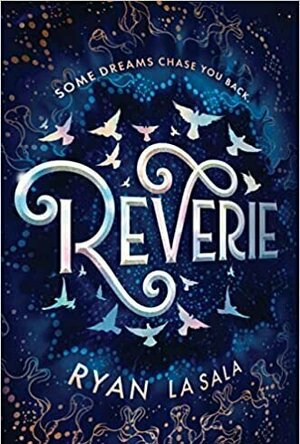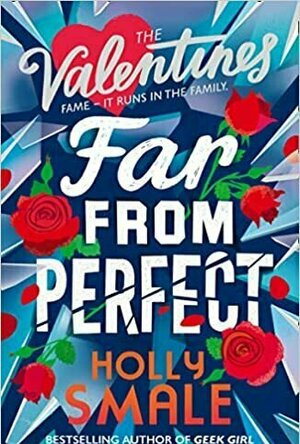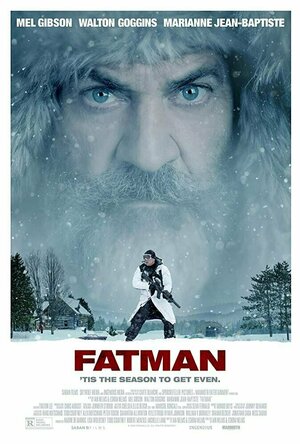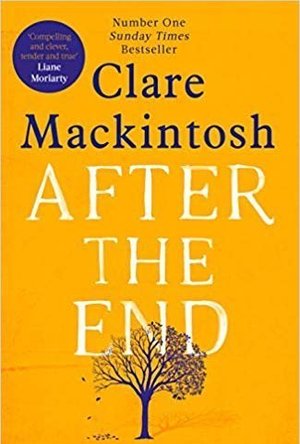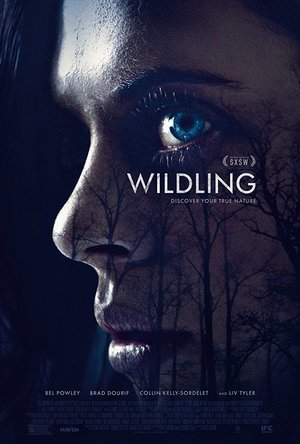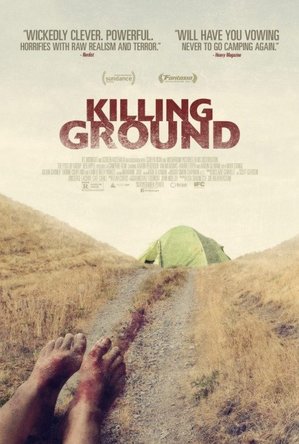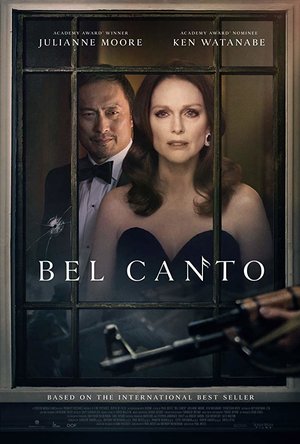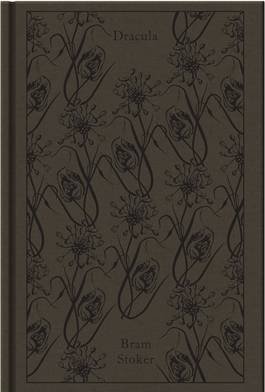Search
Search results
Ivana A. | Diary of Difference (1171 KP) rated Reverie in Books
Oct 5, 2020
I wanted to love Reverie by Ryan La Sala so much!
Reverie has a wonderful cover that draws you in immediately. The plot mentions a boy and a fantasy world that revolves around dreams. Everything I hoped this book would be – it wasn’t.
Kane is a gay teenager who is trying to pick up the pieces of his life back together after an attack leaves him with no memories of the past. He is in the search of who he is and who he was, and he discovers an alternate reality that he was involved in.
Reveries are worlds born from a person’s private fantasies, and once they manifest they can only be unraveled by bringing their conflicts to a resolution. Reveries have rules and plots, magic and monsters – anything you could wish for. And one wrong step can twist the entire thing into a lethal nightmare maze.
Sounds complicated already?
What if I told you that this is only from the blurb and the book doesn’t really explain these things at all?
Kane is an unraveler, together with The Others. Or at least he was, until one of The Others purged Kane of his memories. And here we are now, with Kane trying to solve the mystery and fight against evil.
I jumped into this book very eagerly, and was disappointing immediately, within the first couple of pages. The reveries and their whole concept were quite confusing, to the point of me not knowing whether the characters are now in a reverie, or in their real world.
Reverie had an amazing concept and it could’ve been done way better than this. I am just disappointed. It all seemed a bit messy and felt like it wasn’t thought through…
I didn’t connect with any of the characters, except for Kane, for the below reasons. And that was it… I didn’t care about any of the others, and there were quite a few characters.
One thing that annoyed me about Reverie, was the exaggeration of the #OwnVoices.
I am not against it, on the contrary! I love equality and I love diversity, and I share love everywhere and to everyone, and if you know me in real life, you will know this about me. We are all equal and different at the same time, and that is the unique thing that connects us all.
However, this book keeps mentioning that Kane is gay. And Kane is a lovely character. He is smart and he is brave. His memories were lost and is desperately trying to find out who he is, who he was, who are his true friends, who is good and who is evil. He doesn’t take for granted on what people tell him. He is AMAZING. Kane was so much more than just gay. But the author kept trying so hard to put an #OwnVoices hashtag on this book, that is was quite aggressive and off-putting. I love books that feature #OwnVoices, but Ryan, please – a little bit of modesty would’ve been nice.
I keep feeling this pressure of trying to write a book review that will not offend anyone, and I don’t mean to offend anyone, but I need to say that sometimes, there can be such a thing as “too much OwnVoicing” in a book. And we shouldn’t be afraid to point it out!
I am really sad about this one, guys. Honestly, I expected it to love it so bad, and now I feel down. I wouldn’t recommend it, but if you think you will love it, please pick it up. You are valid!
Reverie has a wonderful cover that draws you in immediately. The plot mentions a boy and a fantasy world that revolves around dreams. Everything I hoped this book would be – it wasn’t.
Kane is a gay teenager who is trying to pick up the pieces of his life back together after an attack leaves him with no memories of the past. He is in the search of who he is and who he was, and he discovers an alternate reality that he was involved in.
Reveries are worlds born from a person’s private fantasies, and once they manifest they can only be unraveled by bringing their conflicts to a resolution. Reveries have rules and plots, magic and monsters – anything you could wish for. And one wrong step can twist the entire thing into a lethal nightmare maze.
Sounds complicated already?
What if I told you that this is only from the blurb and the book doesn’t really explain these things at all?
Kane is an unraveler, together with The Others. Or at least he was, until one of The Others purged Kane of his memories. And here we are now, with Kane trying to solve the mystery and fight against evil.
I jumped into this book very eagerly, and was disappointing immediately, within the first couple of pages. The reveries and their whole concept were quite confusing, to the point of me not knowing whether the characters are now in a reverie, or in their real world.
Reverie had an amazing concept and it could’ve been done way better than this. I am just disappointed. It all seemed a bit messy and felt like it wasn’t thought through…
I didn’t connect with any of the characters, except for Kane, for the below reasons. And that was it… I didn’t care about any of the others, and there were quite a few characters.
One thing that annoyed me about Reverie, was the exaggeration of the #OwnVoices.
I am not against it, on the contrary! I love equality and I love diversity, and I share love everywhere and to everyone, and if you know me in real life, you will know this about me. We are all equal and different at the same time, and that is the unique thing that connects us all.
However, this book keeps mentioning that Kane is gay. And Kane is a lovely character. He is smart and he is brave. His memories were lost and is desperately trying to find out who he is, who he was, who are his true friends, who is good and who is evil. He doesn’t take for granted on what people tell him. He is AMAZING. Kane was so much more than just gay. But the author kept trying so hard to put an #OwnVoices hashtag on this book, that is was quite aggressive and off-putting. I love books that feature #OwnVoices, but Ryan, please – a little bit of modesty would’ve been nice.
I keep feeling this pressure of trying to write a book review that will not offend anyone, and I don’t mean to offend anyone, but I need to say that sometimes, there can be such a thing as “too much OwnVoicing” in a book. And we shouldn’t be afraid to point it out!
I am really sad about this one, guys. Honestly, I expected it to love it so bad, and now I feel down. I wouldn’t recommend it, but if you think you will love it, please pick it up. You are valid!
Ivana A. | Diary of Difference (1171 KP) rated Far From Perfect (The Valentines, #2) in Books
Oct 5, 2020
<a href="https://amzn.to/2Wi7amb">Wishlist</a>; | <a
<a href="https://diaryofdifference.com/">Blog</a>; | <a href="https://www.facebook.com/diaryofdifference/">Facebook</a>; | <a href="https://twitter.com/DiaryDifference">Twitter</a>; | <a href="https://www.instagram.com/diaryofdifference/">Instagram</a>; | <a href="https://www.pinterest.co.uk/diaryofdifference/pins/">Pinterest</a>;
#1 <a href="https://www.goodreads.com/review/show/2685992062">Happy Girl Lucky</a> - ★★★★★
#2 <a href="https://www.goodreads.com/review/show/3305103151">Far From Perfect</a> - ★★★★
<img src="https://diaryofdifference.com/wp-content/uploads/2020/08/Book-Review-Banner-74.png"/>;
I am extremely happy and excited to be part of the blog tour for Far From Perfect by Holly Smale. Thank you to the team at Harper Collins and Kaleidoscopic Tours - for letting me part of this tour and sending me a copy of the book.
Far From Perfect is the second book in the Valentines series. Read my review of the first book - Happy Girl Lucky.
<b><i>Synopsis:</i></b>
Being born in a family that is considered Hollywood royalty is not easy. When all her family is expecting perfection form her, Faith just wants to be normal.
Instead, paparazzi follows her everywhere. She needs to rehearse everything she says and does. She needs to be herself - but, you know, someone else... at all times.
<b><i>My Thoughts:</i></b>
Far From Perfect manages to portray an unwanted life in the spotlight of a girl that simply wants to be normal. I was very satisfied to see how the media was presented in this book. They push famous people's boundaries, twist stories and stir waters, causing dramas. And while I understand this is their job, I am grateful to see someone write about the negative impact they have on famous people.
I loved Faith as a character and I was so proud to see her stand up and fight. It was so easy to put myself in her shoes and experience her anger and frustration of not being listened to. I loved the friendship Faith has with Scarlett. It is real and funny and strong. But most of all, I loved the sister bond that Faith has with Mercy. It is so pure and emotional, and it made me think of my own little sister and how much she truly means to me.
The story Faith tells us is a story that will touch every teenager. The struggles of love, family, friendships and finding purpose in the world. We have all been there, we have all fought the same battles and we understand. Even though some problems may seem trivial as a grown up, I remember how important those moments were to me when I was young, and how they shaped me today, and I was glad this was not underestimated in this book.
And sometimes, life makes us forget. Time passes by, and we are lost for a bit. Until a book comes in our hands - to remind us what really matters. This is that book. A beautiful continuation of the series. I recommend it to the teenagers - to find your purpose; and also to everyone else - to remember what that purpose is!
<a href="https://amzn.to/2Wi7amb">Wishlist</a>; | <a
<a href="https://diaryofdifference.com/">Blog</a>; | <a href="https://www.facebook.com/diaryofdifference/">Facebook</a>; | <a href="https://twitter.com/DiaryDifference">Twitter</a>; | <a href="https://www.instagram.com/diaryofdifference/">Instagram</a>; | <a href="https://www.pinterest.co.uk/diaryofdifference/pins/">Pinterest</a>;
<a href="https://diaryofdifference.com/">Blog</a>; | <a href="https://www.facebook.com/diaryofdifference/">Facebook</a>; | <a href="https://twitter.com/DiaryDifference">Twitter</a>; | <a href="https://www.instagram.com/diaryofdifference/">Instagram</a>; | <a href="https://www.pinterest.co.uk/diaryofdifference/pins/">Pinterest</a>;
#1 <a href="https://www.goodreads.com/review/show/2685992062">Happy Girl Lucky</a> - ★★★★★
#2 <a href="https://www.goodreads.com/review/show/3305103151">Far From Perfect</a> - ★★★★
<img src="https://diaryofdifference.com/wp-content/uploads/2020/08/Book-Review-Banner-74.png"/>;
I am extremely happy and excited to be part of the blog tour for Far From Perfect by Holly Smale. Thank you to the team at Harper Collins and Kaleidoscopic Tours - for letting me part of this tour and sending me a copy of the book.
Far From Perfect is the second book in the Valentines series. Read my review of the first book - Happy Girl Lucky.
<b><i>Synopsis:</i></b>
Being born in a family that is considered Hollywood royalty is not easy. When all her family is expecting perfection form her, Faith just wants to be normal.
Instead, paparazzi follows her everywhere. She needs to rehearse everything she says and does. She needs to be herself - but, you know, someone else... at all times.
<b><i>My Thoughts:</i></b>
Far From Perfect manages to portray an unwanted life in the spotlight of a girl that simply wants to be normal. I was very satisfied to see how the media was presented in this book. They push famous people's boundaries, twist stories and stir waters, causing dramas. And while I understand this is their job, I am grateful to see someone write about the negative impact they have on famous people.
I loved Faith as a character and I was so proud to see her stand up and fight. It was so easy to put myself in her shoes and experience her anger and frustration of not being listened to. I loved the friendship Faith has with Scarlett. It is real and funny and strong. But most of all, I loved the sister bond that Faith has with Mercy. It is so pure and emotional, and it made me think of my own little sister and how much she truly means to me.
The story Faith tells us is a story that will touch every teenager. The struggles of love, family, friendships and finding purpose in the world. We have all been there, we have all fought the same battles and we understand. Even though some problems may seem trivial as a grown up, I remember how important those moments were to me when I was young, and how they shaped me today, and I was glad this was not underestimated in this book.
And sometimes, life makes us forget. Time passes by, and we are lost for a bit. Until a book comes in our hands - to remind us what really matters. This is that book. A beautiful continuation of the series. I recommend it to the teenagers - to find your purpose; and also to everyone else - to remember what that purpose is!
<a href="https://amzn.to/2Wi7amb">Wishlist</a>; | <a
<a href="https://diaryofdifference.com/">Blog</a>; | <a href="https://www.facebook.com/diaryofdifference/">Facebook</a>; | <a href="https://twitter.com/DiaryDifference">Twitter</a>; | <a href="https://www.instagram.com/diaryofdifference/">Instagram</a>; | <a href="https://www.pinterest.co.uk/diaryofdifference/pins/">Pinterest</a>;
Emma @ The Movies (1786 KP) rated Fatman (2020) in Movies
Dec 21, 2020
I'll level with you on this one, I had no idea what I was in for, but Mel Gibson as a crazed looking Santa had me sold, so I went ahead a brought this one on DVD.
As Santa tries to keep his workshop afloat in ever trying naughty times. But as he diversifies his team, a new problem raises its ugly head, eternally naughty Billy is less than impressed by his coal and hires a hitman to take Santa out of the festivities for good.
The idea of making this sort of Christmas film is wonderful to me, the action-packed ride of a thriller with just enough festivity to make it a great alternative Christmas movie choice... *chef's kiss*
Bringing the added twist of children getting a little less nice every year, we see the stark reality that this brings to Santa's business model. It gives him the very modern concern of traditional businesses... and I really liked that angle.
Gibson in the gruff but jolly role of Santa fits well with this aesthetic, and the way he manages to turn Santa into a hardened action star really amused me. There were great subtleties in the character and I loved how we saw his changes, and how they dealt with the mystery of Santa as an eternal, all-knowing character. And for that matter, the elves and how they prove to be the most effective workforce on the planet.
Pitted against Santa we have Walton Goggins as our hitman and Chance Hurstfield as Billy... who is the first person I have wished a reindeer trampling on. Billy is the evil part of the baddie contingent, while the Skinny Man (as he's named on IMDb) really feels like he's just bad for the paycheck and you'd actually bring him round after a good talking to. Goggins has an interesting backstory to his character, and yet for some reason we never get a very satisfying look at it. An opportunity missed that leaves part of the storyline a little unanswered.
Almost instantly I was struck by the look of the film, the general muted tones with punctuations of red and green made for very strong visuals. The snow-covered scenery and rustic feel to Santa's compound was a lovely addition too, and it was a refreshing change to the vibrant and excessively cheery depiction of a "traditional" Santa's village.
While I loved the idea they were conjuring here, there were bits of the execution that didn't feel quite right. For an action film, it was missing some... kapow... literally. The explosions had no wow factor and seemed rather tame for this outlandish tale. The film also felt like it was trying to be too many different things. Billy's overly animated maniacal behaviour felt like it was trying to keep the film for a younger audience, but with a 15 rating that was out of their reach. This, coupled with the missing Goggins backstory felt like they weren't convinced by their own ideas. With the film being quite a short 1 hour 40 I think it could have stood a few additions here and there.
I'm definitely here for the menacing Father Christmas, and more actiony Christmas movies in my life. The way they switched this one up put a genuine smile on my face.
Originally posted on: https://emmaatthemovies.blogspot.com/2020/12/fatman-movie-review.html
As Santa tries to keep his workshop afloat in ever trying naughty times. But as he diversifies his team, a new problem raises its ugly head, eternally naughty Billy is less than impressed by his coal and hires a hitman to take Santa out of the festivities for good.
The idea of making this sort of Christmas film is wonderful to me, the action-packed ride of a thriller with just enough festivity to make it a great alternative Christmas movie choice... *chef's kiss*
Bringing the added twist of children getting a little less nice every year, we see the stark reality that this brings to Santa's business model. It gives him the very modern concern of traditional businesses... and I really liked that angle.
Gibson in the gruff but jolly role of Santa fits well with this aesthetic, and the way he manages to turn Santa into a hardened action star really amused me. There were great subtleties in the character and I loved how we saw his changes, and how they dealt with the mystery of Santa as an eternal, all-knowing character. And for that matter, the elves and how they prove to be the most effective workforce on the planet.
Pitted against Santa we have Walton Goggins as our hitman and Chance Hurstfield as Billy... who is the first person I have wished a reindeer trampling on. Billy is the evil part of the baddie contingent, while the Skinny Man (as he's named on IMDb) really feels like he's just bad for the paycheck and you'd actually bring him round after a good talking to. Goggins has an interesting backstory to his character, and yet for some reason we never get a very satisfying look at it. An opportunity missed that leaves part of the storyline a little unanswered.
Almost instantly I was struck by the look of the film, the general muted tones with punctuations of red and green made for very strong visuals. The snow-covered scenery and rustic feel to Santa's compound was a lovely addition too, and it was a refreshing change to the vibrant and excessively cheery depiction of a "traditional" Santa's village.
While I loved the idea they were conjuring here, there were bits of the execution that didn't feel quite right. For an action film, it was missing some... kapow... literally. The explosions had no wow factor and seemed rather tame for this outlandish tale. The film also felt like it was trying to be too many different things. Billy's overly animated maniacal behaviour felt like it was trying to keep the film for a younger audience, but with a 15 rating that was out of their reach. This, coupled with the missing Goggins backstory felt like they weren't convinced by their own ideas. With the film being quite a short 1 hour 40 I think it could have stood a few additions here and there.
I'm definitely here for the menacing Father Christmas, and more actiony Christmas movies in my life. The way they switched this one up put a genuine smile on my face.
Originally posted on: https://emmaatthemovies.blogspot.com/2020/12/fatman-movie-review.html
Kristy H (1252 KP) rated After the End in Books
Jun 25, 2019
Max and Pip have a deep, untenable bond and a strong marriage that they feel is sealed by fate. But when their nearly three-year-old son, Dylan, gets sick, everything they know changes. Dylan has a brain tumor, and now Pip spends her days in the PICU, while Max tries to juggle work and being strong for his wife and child. Then, the couple receives the worst of all news: the chemo isn't helping Dylan's tumor, and the doctors feel Dylan's condition is terminal. Suddenly, Max and Pip find themselves on opposite sides--each wanting different medical treatment for their beloved boy.
Clare Mackintosh offers us a beautiful, poignant, and heartbreaking book based on her life experiences, having lost her own son. Knowing this makes the book even more tender and real, as each word is based on a kernel of truth. Reading this book isn't always easy--as a parent, my heart digested these words and put myself in the shoes of Max and Pip. This book makes you think, and it makes you so incredibly grateful for your own life, wanting to snuggle your own children and hold them dear.
"How can my son be a breath away from death, when evidence of his life is all around me? When I feel him in my heart, as surely as when I carried him in my womb?"
The story is one of loss, yes, but it's also a love story: Max and Pip, Dylan and his family, and more. We are introduced to Dylan's family and also to Dylan's doctor, Leila, whom I really liked. Leila has her own struggles. Her mom, Habibeh, is visiting, but won't leave the house, preferring to watch QVC and cook endlessly for her daughter. (Habibeh is a trip; she's awesome.) The decision of Dylan's fate falls on Leila's shoulders first: a lot for a young doctor to bear. We get the story through her eyes and then each of Dylan's parents. As a mom, I felt drawn to Pip, but I liked how we got both Pip and Max's perspectives. Each only wants what is best for their son--and, at first, each feels they are doing the right thing.
"However long you spend with someone, however well you think you know them, they can still be a stranger to you."
Mackintosh is best known for her thrillers, and, this book is just as well-written as those. And, interestingly enough, she throws in a bit of a twist here, too. I won't spoil it, per se, but will tell you that this book is a fascinating exploration of choices, allowing you to think about life and the various paths that everyone can take. It's a sad book, yes, but lovely too--a tribute to parents, medical professionals, and to the children we love so much. It's a reminder to cherish those we hold dear and that life can be short but beautiful, no matter which way it may turn out.
Overall, even though I found this difficult to read at times, I'm really glad I did. I was reminded, yet again, what a good writer Clare Mackintosh is. I'm so incredibly sorry she lost her son, and I'm in such awe that she could turn that loss into such a lovely book. I highly recommend this--it's a beautiful exploration of life's different paths and what fate can bring us.
Clare Mackintosh offers us a beautiful, poignant, and heartbreaking book based on her life experiences, having lost her own son. Knowing this makes the book even more tender and real, as each word is based on a kernel of truth. Reading this book isn't always easy--as a parent, my heart digested these words and put myself in the shoes of Max and Pip. This book makes you think, and it makes you so incredibly grateful for your own life, wanting to snuggle your own children and hold them dear.
"How can my son be a breath away from death, when evidence of his life is all around me? When I feel him in my heart, as surely as when I carried him in my womb?"
The story is one of loss, yes, but it's also a love story: Max and Pip, Dylan and his family, and more. We are introduced to Dylan's family and also to Dylan's doctor, Leila, whom I really liked. Leila has her own struggles. Her mom, Habibeh, is visiting, but won't leave the house, preferring to watch QVC and cook endlessly for her daughter. (Habibeh is a trip; she's awesome.) The decision of Dylan's fate falls on Leila's shoulders first: a lot for a young doctor to bear. We get the story through her eyes and then each of Dylan's parents. As a mom, I felt drawn to Pip, but I liked how we got both Pip and Max's perspectives. Each only wants what is best for their son--and, at first, each feels they are doing the right thing.
"However long you spend with someone, however well you think you know them, they can still be a stranger to you."
Mackintosh is best known for her thrillers, and, this book is just as well-written as those. And, interestingly enough, she throws in a bit of a twist here, too. I won't spoil it, per se, but will tell you that this book is a fascinating exploration of choices, allowing you to think about life and the various paths that everyone can take. It's a sad book, yes, but lovely too--a tribute to parents, medical professionals, and to the children we love so much. It's a reminder to cherish those we hold dear and that life can be short but beautiful, no matter which way it may turn out.
Overall, even though I found this difficult to read at times, I'm really glad I did. I was reminded, yet again, what a good writer Clare Mackintosh is. I'm so incredibly sorry she lost her son, and I'm in such awe that she could turn that loss into such a lovely book. I highly recommend this--it's a beautiful exploration of life's different paths and what fate can bring us.
Darren (1599 KP) rated The Dressmaker (2016) in Movies
Oct 14, 2019
Characters – Tilly Dunnage is a glamorous woman that has seen the world learning the fashion world, she has returned home for revenge after being forced to leave the town as a child, she helps the women of the town look gorgeous and extra special, while she convinces herself that she isn’t cursed. She knows how to turn heads using her cloths to make this happen. Molly is the mother of Tilly who has been living in isolation for years, she didn’t want her daughter to return, even though she doesn’t start to bond with her after all these years apart. Teddy is a young man in the town, he is one of the few people that looked after Molly while Tilly was away, he soon takes a shine to her, wanting to prove that she didn’t do anything in the first place. Sergeant Farrat is one of the people that is happy to welcome Tilly back to town, he does have his own secret which involves his cross dressing, making him easy to twist when Tilly wants information.
Performances – Kate Winslet is great in this leading role, bring us a character filled with guilt who is just as happy to show a positive confident side to the people in the town. Judy Davis is a scene stealer in this film, being able to get the laughs required to make her the most memorable part of nearly ever scene she is in. Liam Hemsworth is at the best he has ever been, which is great to see him breaking away from the roles that aren’t working for him. Hugo Weaving gets to have a lot of fun in his role too.
Story – The story follows a woman who returns home to get revenge on the people that forced her to leave, only to learn that town has just as many secrets within the walls, that revenge is just about letting them out. We get to see how a town can turn enough heads to make everything seem like nothing is wrong, only for a curse to be waiting to be lifted if it isn’t inside somebody’s mind. We do get a lot of characters being introduced which can make things difficult to keep up with because we get plenty of little factors that do lead up to the personal conflict between the characters. this is a lot more fun of a story than I was expecting even though it is sprinkled with very dark moments.
Comedy – The comedy in the film does come the quirky nature of the events as they unfold, we have plenty of fashion related comical moments as well as small town gossip, which will get laugh along the way.
Settings – The film is set in a small rural Australian town, where everybody does know everybody else, we are filled with gossip and instant reactions to anything that goes on in the town too.
Scene of the Movie – Leaving town.
That Moment That Annoyed Me – Slightly too many characters.
Final Thoughts –This is a quirky dark comedy that is sprinkled by the elements of revenge, which does keep us wondering just what is the endgame of her decision making process.
Overall: Dark quirky comedy treat.
Performances – Kate Winslet is great in this leading role, bring us a character filled with guilt who is just as happy to show a positive confident side to the people in the town. Judy Davis is a scene stealer in this film, being able to get the laughs required to make her the most memorable part of nearly ever scene she is in. Liam Hemsworth is at the best he has ever been, which is great to see him breaking away from the roles that aren’t working for him. Hugo Weaving gets to have a lot of fun in his role too.
Story – The story follows a woman who returns home to get revenge on the people that forced her to leave, only to learn that town has just as many secrets within the walls, that revenge is just about letting them out. We get to see how a town can turn enough heads to make everything seem like nothing is wrong, only for a curse to be waiting to be lifted if it isn’t inside somebody’s mind. We do get a lot of characters being introduced which can make things difficult to keep up with because we get plenty of little factors that do lead up to the personal conflict between the characters. this is a lot more fun of a story than I was expecting even though it is sprinkled with very dark moments.
Comedy – The comedy in the film does come the quirky nature of the events as they unfold, we have plenty of fashion related comical moments as well as small town gossip, which will get laugh along the way.
Settings – The film is set in a small rural Australian town, where everybody does know everybody else, we are filled with gossip and instant reactions to anything that goes on in the town too.
Scene of the Movie – Leaving town.
That Moment That Annoyed Me – Slightly too many characters.
Final Thoughts –This is a quirky dark comedy that is sprinkled by the elements of revenge, which does keep us wondering just what is the endgame of her decision making process.
Overall: Dark quirky comedy treat.
Darren (1599 KP) rated Wildling (2018) in Movies
Oct 14, 2019
Characters – Anna was raised by a man in the middle of the woods, she has been drugged to stop her going through her womanhood until she is rescued. Taken in by the local sheriff, she learns about the world for the first time, only she isn’t prepared for everything, finding it hard to adjust to everything. Daddy is the man that has raised Anna, he did educate her, while warning her about the outdoors, while he does drug her, the mystery is around why he kept her isolated. Ellen is the local sheriff that takes Anna in, she does her best to teach her about being a woman, while others just want to lock her away. Ray is the sister of Ellen that is still in high school, he tries to help her on a social standpoint, while being one of the only people left for her to trust.
Performances – Bel Powley is great in this leading role, she must go through a transformation and play the fish out of water figure too. Brad Dourif is just as creepy and you need him to be, always going to work in this type of role, with Liv Tyler being the cop that believes they know what will be right for victim, trying to be the role model figure.
Story – The story here follows a young girl that is raised in the woods, only to be released to discover who she really is and what she is capable off. This story does follow the traditions of seeing a young girl taken and raised in secret, before something happens to bring her into the real world, this side of things has been done before, it works and is an effective way to bring a stranger into a modern world. Where this story takes an interesting turn comes from the reason behind why she was being kept, we do get to see what she really is, but we don’t get to see if she is a threat to everybody else, we do get a couple of message in this film too that want to point out certain motives in hunting, but overall the story keeps us guessing and surprised by the truth.
Fantasy/Horror – This film does dive into fantasy when it comes to learn what Anna really is, we have ideas early on, but we are never truly sure what she will become, this does help with the horror side of the film because it keeps us waiting to see if there will be more bloodshed.
Settings – The film is set in a town surrounded by woodlands, this shows first where she was raised and where the people will welcome her, right back to where she feels more comfortable.
Special Effects – The effects are used to show the wounds and the look of the Wildling figure, there give us a creepy but natural looking creature and the blood isn’t afraid to be splashed about here.
Scene of the Movie – Home from the party.
That Moment That Annoyed Me – We could spend more time learn the normal human life.
Final Thoughts – This is a fun fantasy horror, it doesn’t hide the blood and is happy to give us a twist on the traditional storytelling.
Overall: Fantasy Horror 101
Performances – Bel Powley is great in this leading role, she must go through a transformation and play the fish out of water figure too. Brad Dourif is just as creepy and you need him to be, always going to work in this type of role, with Liv Tyler being the cop that believes they know what will be right for victim, trying to be the role model figure.
Story – The story here follows a young girl that is raised in the woods, only to be released to discover who she really is and what she is capable off. This story does follow the traditions of seeing a young girl taken and raised in secret, before something happens to bring her into the real world, this side of things has been done before, it works and is an effective way to bring a stranger into a modern world. Where this story takes an interesting turn comes from the reason behind why she was being kept, we do get to see what she really is, but we don’t get to see if she is a threat to everybody else, we do get a couple of message in this film too that want to point out certain motives in hunting, but overall the story keeps us guessing and surprised by the truth.
Fantasy/Horror – This film does dive into fantasy when it comes to learn what Anna really is, we have ideas early on, but we are never truly sure what she will become, this does help with the horror side of the film because it keeps us waiting to see if there will be more bloodshed.
Settings – The film is set in a town surrounded by woodlands, this shows first where she was raised and where the people will welcome her, right back to where she feels more comfortable.
Special Effects – The effects are used to show the wounds and the look of the Wildling figure, there give us a creepy but natural looking creature and the blood isn’t afraid to be splashed about here.
Scene of the Movie – Home from the party.
That Moment That Annoyed Me – We could spend more time learn the normal human life.
Final Thoughts – This is a fun fantasy horror, it doesn’t hide the blood and is happy to give us a twist on the traditional storytelling.
Overall: Fantasy Horror 101
Darren (1599 KP) rated Killing Ground (2016) in Movies
Oct 14, 2019
Story: Killing Ground starts when couple Ian (Meadows) and Samantha (Dyer) head off for a romantic camping trip, learning they are not the only couple on the grounds they look to stay out of the others way, only to never see them return to their grounds. Scotty (Pedersen) and Tood (Glenane) are two locals of the area that come off shady, also have had run ins with the law.
We know something happened to the family in the camp next door and when Ian and Samantha find their baby wandering around the area. Soon they will be fighting for their lives against the criminal psychopaths that enjoy hunting.
Thoughts on Killing Ground
Characters – Ian is a doctor who along with his girlfriend goes on the camping trip, he knows how to survive any injuries which makes him the one that could help survive the attack because o his logical decision making process. Samantha is the girlfriend that is using the trip for a big moment only to find herself needing to fight to survive. Scotty is the one of the two which seems to be the mastermind, well leader of the two who knows how to control the situation and Tood. Tood is the loose cannon, who comes off simple minded at times and other times he comes off like the psychopath he is meant to be.
Performances – The performances in this film do come off real, we believe the couple Ian Meadows & Harriet Dyer with each decision they must make, we also get scared of both the Aaron’s who gives us uneasy performances through the whole film.
Story – The story here follows three lines to start with, we have the couple heading of to their romantic camping trip, the family on their camping trip, that we know something happens to and the two men who will be committing the crime. To start with this felt annoying, I won’t lie, but soon this just builds the tension through the film as we just want to know what happens, with each twist that connection the stories becoming unsettling. We see the aftermath of what has happened over just putting us through the events, which only continues to make everything extra disturbing. This is a type of story we have seen before, though the fresh approach to this only makes this more interesting to watch even if you want to look away.
Horror – This is easily one of the most disturbing horror films you will see, when you stop to think about anything that happens, what you end up feeling is just uneasy because of what happens off camera, with the tension only making this harder to get through.
Settings – The film takes place in a remote camping ground which gives us the feeling of isolation, with have no phone signal and the humans might not be the only danger here, this is a perfect use of setting.
Special Effects – The effects are used to make each moment look more horrific, they are subtle and effective.
Scene of the Movie – When the couple plan to leave, we have a wonderful shot of Samantha walking away with somebody desperately needing help behind her.
That Moment That Annoyed Me – I didn’t like the opening moments of the three stories, it does work once we are get going.
Final Thoughts – This is one of the most disturbing non-graphic films I have seen, being left to imagine just what happens is even worse than watching it.
Overall: Unsettling and disturbing.
We know something happened to the family in the camp next door and when Ian and Samantha find their baby wandering around the area. Soon they will be fighting for their lives against the criminal psychopaths that enjoy hunting.
Thoughts on Killing Ground
Characters – Ian is a doctor who along with his girlfriend goes on the camping trip, he knows how to survive any injuries which makes him the one that could help survive the attack because o his logical decision making process. Samantha is the girlfriend that is using the trip for a big moment only to find herself needing to fight to survive. Scotty is the one of the two which seems to be the mastermind, well leader of the two who knows how to control the situation and Tood. Tood is the loose cannon, who comes off simple minded at times and other times he comes off like the psychopath he is meant to be.
Performances – The performances in this film do come off real, we believe the couple Ian Meadows & Harriet Dyer with each decision they must make, we also get scared of both the Aaron’s who gives us uneasy performances through the whole film.
Story – The story here follows three lines to start with, we have the couple heading of to their romantic camping trip, the family on their camping trip, that we know something happens to and the two men who will be committing the crime. To start with this felt annoying, I won’t lie, but soon this just builds the tension through the film as we just want to know what happens, with each twist that connection the stories becoming unsettling. We see the aftermath of what has happened over just putting us through the events, which only continues to make everything extra disturbing. This is a type of story we have seen before, though the fresh approach to this only makes this more interesting to watch even if you want to look away.
Horror – This is easily one of the most disturbing horror films you will see, when you stop to think about anything that happens, what you end up feeling is just uneasy because of what happens off camera, with the tension only making this harder to get through.
Settings – The film takes place in a remote camping ground which gives us the feeling of isolation, with have no phone signal and the humans might not be the only danger here, this is a perfect use of setting.
Special Effects – The effects are used to make each moment look more horrific, they are subtle and effective.
Scene of the Movie – When the couple plan to leave, we have a wonderful shot of Samantha walking away with somebody desperately needing help behind her.
That Moment That Annoyed Me – I didn’t like the opening moments of the three stories, it does work once we are get going.
Final Thoughts – This is one of the most disturbing non-graphic films I have seen, being left to imagine just what happens is even worse than watching it.
Overall: Unsettling and disturbing.
Emma @ The Movies (1786 KP) rated Bel Canto (2018) in Movies
Jun 11, 2020
The novel of Bel Canto is one of my favourites, and though I haven't read it for years I still recommend it to people. When I saw that they'd made a film of it I was ecstatic. But of course my luck wasn't working well! No mainstream release in the UK and seemingly not available in any way to see, then on a whim I searched Amazon and there it was, available as a digital release... GIMME!!
Roxanne has been hired to play at a private function in South America. It should be a simple performance, but when the residence is taken hostage the evening goes on a little longer than expected. The demands are seemingly simple, but no one wants to succumb to the, so the hostages must settle in for an extended stay with their captors.
The basis for the novel and film is the 1996 Japanese embassy hostage crisis where 14 members of the MRIA took hundreds of high level diplomats and officials hostage. With just a cursory look at the details of that incident it appears that several key points have been kept in some way but artistic licence has been used to give us a snapshot inside during the event.
I love Julianne Moore, so having her name attached was a definite bonus, especially alongside Ken Watanabe. The pair have a good dynamic and the language barrier imposed by the script (for all the characters) adds a different dynamic to the film. Watching them trying to communicate with each other and seeing the little touches it brought was very interesting.
When it came to the acting I thought the cast was incredibly well balanced, the standard was good and having such a variety of people meant that there was a lot to pick up on.
This does however come with a slight drawback, there are a lot of characters and they all have something about them to make them interesting... there's have been no point in having them if that wasn't the case. At no time do you have a chance to learn about any of them properly though, as soon as there's an opportunity we have to cut to a different scene and we're left with snippets. While that wasn't a negative for me overall it could have been an interesting addition, and at an hour and forty in length I think there was room for some more character pieces without making it too long.
Here's my one major negative about Bel Canto. Roxanne is a world-renowned opera singer, Julianne Moore is not... so they taught her to lipsync to the pieces that Renee Fleming would be voicing. Quite simply put, on screen it looks terrible. In some films you see people singing and don't realise it isn't them, there might be tricksy camera angles or decent lipsyncing, in those instances you don't notice and it all flows well. Without knowing this going into Bel Canto it was still very obvious. I'd be tempted to say close your eyes when she starts singing, you will miss some reaction shots of other characters but Fleming's vocals are wonderful but Moore's rendition is lacking the gravitas to go with it.
The bond that is created between the hostages and with their captors is shown extremely well and that makes the way the film plays out even more affecting. There's certainly room for improvement, but what comes to the screen is a very interesting twist on the original event and the novel.
Originally posted on: https://emmaatthemovies.blogspot.com/2020/06/bel-canto-movie-review.html
Roxanne has been hired to play at a private function in South America. It should be a simple performance, but when the residence is taken hostage the evening goes on a little longer than expected. The demands are seemingly simple, but no one wants to succumb to the, so the hostages must settle in for an extended stay with their captors.
The basis for the novel and film is the 1996 Japanese embassy hostage crisis where 14 members of the MRIA took hundreds of high level diplomats and officials hostage. With just a cursory look at the details of that incident it appears that several key points have been kept in some way but artistic licence has been used to give us a snapshot inside during the event.
I love Julianne Moore, so having her name attached was a definite bonus, especially alongside Ken Watanabe. The pair have a good dynamic and the language barrier imposed by the script (for all the characters) adds a different dynamic to the film. Watching them trying to communicate with each other and seeing the little touches it brought was very interesting.
When it came to the acting I thought the cast was incredibly well balanced, the standard was good and having such a variety of people meant that there was a lot to pick up on.
This does however come with a slight drawback, there are a lot of characters and they all have something about them to make them interesting... there's have been no point in having them if that wasn't the case. At no time do you have a chance to learn about any of them properly though, as soon as there's an opportunity we have to cut to a different scene and we're left with snippets. While that wasn't a negative for me overall it could have been an interesting addition, and at an hour and forty in length I think there was room for some more character pieces without making it too long.
Here's my one major negative about Bel Canto. Roxanne is a world-renowned opera singer, Julianne Moore is not... so they taught her to lipsync to the pieces that Renee Fleming would be voicing. Quite simply put, on screen it looks terrible. In some films you see people singing and don't realise it isn't them, there might be tricksy camera angles or decent lipsyncing, in those instances you don't notice and it all flows well. Without knowing this going into Bel Canto it was still very obvious. I'd be tempted to say close your eyes when she starts singing, you will miss some reaction shots of other characters but Fleming's vocals are wonderful but Moore's rendition is lacking the gravitas to go with it.
The bond that is created between the hostages and with their captors is shown extremely well and that makes the way the film plays out even more affecting. There's certainly room for improvement, but what comes to the screen is a very interesting twist on the original event and the novel.
Originally posted on: https://emmaatthemovies.blogspot.com/2020/06/bel-canto-movie-review.html
Ivana A. | Diary of Difference (1171 KP) rated Dracula in Books
Oct 2, 2020
Dracula by Bram Stoker is the ultimate horror classic of all times. This is where it all started. A tale about a creature that feeds on the blood to survive, but also a tale of friendship and love, described and presented in a way we rarely have a privilege to see these days.
If Vampire Diaries, Vampire Academy, Twilight and the Sookie Stackhouse series pop to your mind when you first think of vampires, this book might feel extremely slow to your taste. However, if you want to experience the real horror and the building tension through many diary entries - you will enjoy this book completely.
I am a fan of both, and I had moments where I fell in love with the detailed explanations of weather and whereabouts. But the setting of writing many polite letters to people dear to the characters also made me cringe. I suppose a cringe can’t be all bad for a horror book though?
Through many diary entries of various characters, we follow their experience with the Count Dracula. Young Jonathan Harker is sent to go to Transylvania and arrange for the apartments the Count Dracula wants to buy in London. During his stay, he faces many unusual things. Meanwhile, his fiance Mina and her friend Lucy are in London, and Lucy is facing some unusual experiences herself, when Dr. Seward arrives to help better her condition.
“How blessed are some people, whose lives have no fears, no dreads; to whom sleep is a blessing that comes nightly, and brings nothing but sweet dreams.”
I knew what I was getting into, and I believe knowing this is a classic, and not a fast-paced romance with a paranormal twist put me in the right mood from the very beginning, so I was aware of what I was going into, and I really enjoyed it!
Dracula as a character is so mysterious, so powerful, very feared and secretly admired. I both loved and hated the fact that we don’t get to really see much of him, but we have to be satisfied with what the other characters are going through. And even though, he continues to be a shadow, a fear, a thought of everything they are doing. He is always there, even when he isn’t, and it requires great skills as a writer to create that presence for a character.
The characters of Lucy and Mina were very interesting - from a time perspective. How things have changed for women in all these years. What women were doing and thinking at that time, and how different it is now. I suppose I could make all the comparisons in the world - but one thing stays true will all classic books - they leave a mark of the time they were written, and this mark always gets better as time goes by.
“It is really wonderful how much resilience there is in human nature. Let any obstructing cause, no matter what, be removed in any way - even by death - and we fly back to first principles of hope and enjoyment."
I am glad I read Dracula, and I will try to read more classics in the new year. The writing style, the past of them, they remind you to take a big breath and acknowledge many things you take for granted in today’s world. In a world of page-turners, you sometimes need a slow book that makes you think deeply.
If Vampire Diaries, Vampire Academy, Twilight and the Sookie Stackhouse series pop to your mind when you first think of vampires, this book might feel extremely slow to your taste. However, if you want to experience the real horror and the building tension through many diary entries - you will enjoy this book completely.
I am a fan of both, and I had moments where I fell in love with the detailed explanations of weather and whereabouts. But the setting of writing many polite letters to people dear to the characters also made me cringe. I suppose a cringe can’t be all bad for a horror book though?
Through many diary entries of various characters, we follow their experience with the Count Dracula. Young Jonathan Harker is sent to go to Transylvania and arrange for the apartments the Count Dracula wants to buy in London. During his stay, he faces many unusual things. Meanwhile, his fiance Mina and her friend Lucy are in London, and Lucy is facing some unusual experiences herself, when Dr. Seward arrives to help better her condition.
“How blessed are some people, whose lives have no fears, no dreads; to whom sleep is a blessing that comes nightly, and brings nothing but sweet dreams.”
I knew what I was getting into, and I believe knowing this is a classic, and not a fast-paced romance with a paranormal twist put me in the right mood from the very beginning, so I was aware of what I was going into, and I really enjoyed it!
Dracula as a character is so mysterious, so powerful, very feared and secretly admired. I both loved and hated the fact that we don’t get to really see much of him, but we have to be satisfied with what the other characters are going through. And even though, he continues to be a shadow, a fear, a thought of everything they are doing. He is always there, even when he isn’t, and it requires great skills as a writer to create that presence for a character.
The characters of Lucy and Mina were very interesting - from a time perspective. How things have changed for women in all these years. What women were doing and thinking at that time, and how different it is now. I suppose I could make all the comparisons in the world - but one thing stays true will all classic books - they leave a mark of the time they were written, and this mark always gets better as time goes by.
“It is really wonderful how much resilience there is in human nature. Let any obstructing cause, no matter what, be removed in any way - even by death - and we fly back to first principles of hope and enjoyment."
I am glad I read Dracula, and I will try to read more classics in the new year. The writing style, the past of them, they remind you to take a big breath and acknowledge many things you take for granted in today’s world. In a world of page-turners, you sometimes need a slow book that makes you think deeply.
